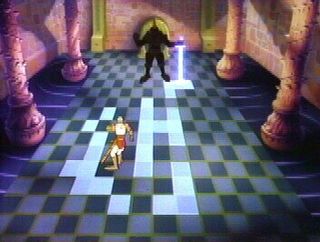The 12 greatest arcade machines of all time
Decades later, we still feel these dinosaurs' footsteps – and they still play perfectly
Robotron: 2084
Released 1982
Like Defender before it, Robotron introduced a completely radical control scheme – two joysticks and no buttons – and with that came a new ability: the player could move in one direction and shoot in another True, other games also expored this concept (Tron in ‘82, Vanguard in ‘81). But unlike Tron, Vanguard or Defender, the control scheme Robotron created lasted more than a game or two. It turned out to be almost 20 years ahead of its time. The keyboard-and-mouse setup that defines PC shooters is an evolution of the concept, and the exact twin-stick idea would return in 1997, when Sony introduced the dual-shock controller in Japan. Dual sticks are standard equipment on console controllers today (even the Wii, whose motion sensitive remote mimics that second stick).

Robotron: 2084 also deserves a big chunk of credit for the success of Xbox Live Arcade. You see, much of XBLA’s success came as a result of Geometry Wars: Retro Evolved, a simple little top-down, twin-stick shooter that stole its looks from the arcade game Tempest and everything else straight from Robotron: 2084. And which, in turn, inspired Everyday Shooter, Mutant Storm, Cash Guns Chaos, and about 50 other twin-stick arcade shooters.
Dragon’s Lair
Released 1983
The release of Dragon’s Lair was the shot heard round the world, but that didn’t actually hit anything. In 1983, the arrival of the Laserdisc game seemed like the second coming of video games. With fluid, hand-animated scenes courtesy of Don Bluth’s animation studio, it was literally as if you were playing a cartoon. No traditional game machine anywhere could match the sheer gorgeousness of Dragon’s Lair. It cost twice as much to play in most arcades as any other game, and there was still always a crowd around it. It was, plainly and obviously, the future of video games.

Or not. Ultimately, the pattern-memorization gameplay of laserdisc games didn’t really catch on the way it seemed they would back in 1983. But Dragon’s Lair remains one of the most successful, most recreated games of all time and a true classic. And it’s still captivating today – if you can get past the Black Knight and his disco checkerboard of doom.
Gauntlet
Released 1985
Sign up to the 12DOVE Newsletter
Weekly digests, tales from the communities you love, and more
By today’s standards, Gauntlet is remarkably basic: four players wander around a maze killing everything that moves and occasionally eating food to regain health. But that’s just it; this game is nearly 25 years old and we just described most of today’s games as well – except they can't usually offer four player co-op.

With the arguable exception of an obscure Indy racing game (how can a racing game be cooperative?), Gauntlet was the first four-player cooperative game ever. That alone, along with the fact that it’s still a blast to play, would be enough to put it on this list. But Gauntlet did more, and we’re not just talking about it giving us the first known instances of that MMO tradition: party members squabbling over loot (food, in this case).
Here’s the thing: Gauntlet is the forerunner of every action RPG and first-person shooter in creation. Isometric Action RPGs? They’re all just Gauntlet on a tilt. First person shooters? Gauntlet in a tube. When you get right down to it, without Gauntlet, you might not have Diablo or Wolfenstein or Doom or any of those other franchises you hold so dear. What you would have is a sad face.
Street Fighter II – The World Warrior
Released 1991
2D fighting games exploded onto the scene in 1991, mostly thanks to two franchises: Street Fighter II and Fatal Fury/King of Fighters. But Street Fighter II hit first and hit harder, establishing the archetypes – to this day, every fighting game has one character with Ryu’s fireball and probably his other moves to boot – and spawning legions of imitators and knock-offs.

Publisher Capcom has also done a mostly perfect job of handling the franchise, constantly turning out new iterations with tweaked moves and rebalanced nuances, as well as new characters. And in early 2009, Capcom finally shed the “Street Fighter always sucks in 3D” monkey on its back – actually grabbed the monkey by the throat, kicked it 17 times and then blasted it into the sky with a fireball – with the release of the amazing, masterful Street Fighter IV. There’s a reason Street Fighter is always played at gaming tournaments: it’s the most perfectly formed fighting game there ever has been. And it alwayswill be.













After 32 years, Mortal Kombat 2 has finally been ported to the one hyper-expensive '90s console that could actually do it justice

Mortal Kombat 1 makes good on a 30-year tradition of trolling fans by introducing a confusing, labyrinthine quest to fight pink Floyd, a new ninja





